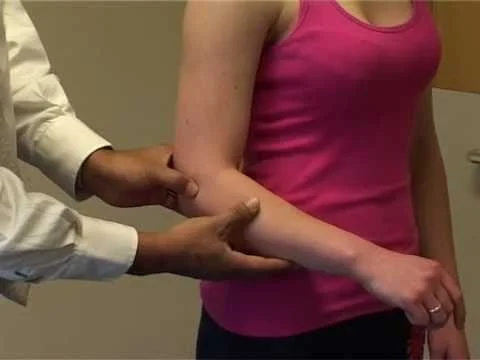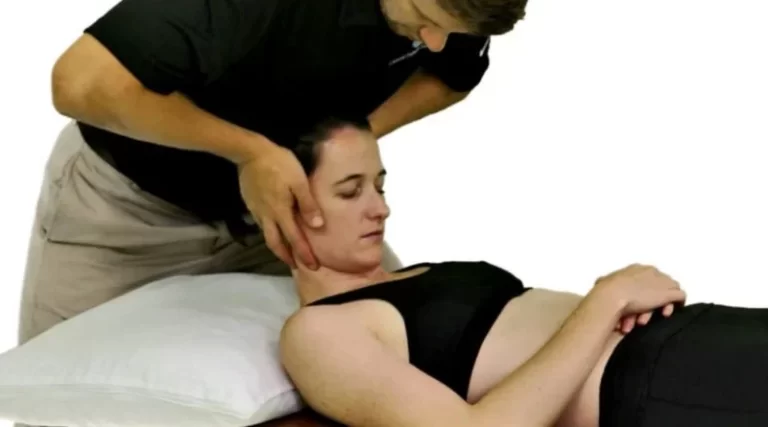Thompson Test of the ankle
Table of Contents
What is the Thompson Test?
The Thompson test, also known as the calf squeeze test, is a simple physical examination technique used to assess the integrity of the Achilles tendon, which connects the calf muscles to the heel bone (calcaneus). This test is often performed by medical professionals, such as orthopedic doctors, Physical Therapists, or sports medicine practitioners, to diagnose Achilles tendon ruptures.
Definition/Description
The Thompson test assesses the Achilles tendon’s integrity. It is used in clinical procedures to determine the existence of a full Achilles rupture. The Simmonds test is another name for this exam.
The therapist does this test in the clinic to assess the Achilles tendon.
The Thompson Test involves compressing the calf muscle to assess the Achilles tendon’s integrity.
Purpose
The purpose of this test is to determine whether or not the Achilles tendon has a complete tear.
Technique of Thompson test
The patient is in a prone position, The foot resting on the end of the table. The patient might also lie prone with his knee flexed to 90°. With his hand, the examiner squeezes the calf muscles, especially the gastrocnemius-soleus complex. Squeezing the calf should cause the Achilles tendon to contract, resulting in plantar flexion. There will be no visible plantar flexion if the Achilles tendon is entirely torn.
Even if the Achilles tendon is torn, the plantaris and deep toe flexors can still supply plantar flexion. Bohn Stafleu van Loghum, 2008. There are three more clinical indications that may be identified to confirm that the patient has a full Achilles tendon rupture:
The patient is in a prone posture with both ankles totally relaxed; the foot on the ruptured side hangs straight down due to a loss of tendon tone.
A perceptible gap in the tendon may exist 3-6cm proximal to the insertion into the calcaneus.
The plantar flexion strength has been considerably diminished.
Key Research
Simmonds revealed in 1957 how squeezing the calf muscles could be an indicator for Achilles tendon rupture. Thompson, on the other hand, had seen this effect in 1955. The Simmonds-Thompson test indicates a probable total rupture, although its mechanism is not well understood.
A study by scott and colleagues utilized an ultrasound to take dynamic images of two young adults’ calf. The gastrocnemius moved proximally in response to ankle movement when transverse compression was applied. There was no proximal movement of the soleus muscle. Thompson and Doherty discovered that dividing the soleus alone resulted in a positive squeezing test result. Scott and colleagues divided the m. gastrocnemius tendon from the m. soleus tendon down to 10 cm above the Achilles tendon, where the fibers form the tendon. Squeezing a healthy calf deformed the m. soleus, causing the overlying m. gastrocnemius tendon to bow away from the tibia, resulting in plantar flexion.
The soleus muscle wasn’t moving longitudinally, but the gastrocnemius muscle moved approximately 1 cm proximally. These findings back up the ultrasonography results. The gastrocnemius did not induce plantar flexion when the squeezing test was conducted on a divided soleus tendon. The gastrocnemius tendon was divided, although complete plantar flexion was not prevented. We may conclude that plantar flexion is produced by bending the calf tendons and less so by proximal displacement of the gastrocnemius belly.
Other findings were discovered in research carried out by Douglas and colleagues. Following surgical examination, two patients were identified with a rupture of the gastrocnemius tendon and an intact soleus tendon. They could both actively plantar flex their ankles and passed the Simmonds-Thompson test. According to this study, the Thompson test is inadequate for detecting a full rupture.
FAQs
A positive test has been described to suggest a complete rupture of the tendon, with the indicated mechanical explanation being the loss of integrity of the soleal section of the tendon.
With the patient’s feet hanging over the edge of the examination table, the Thompson Achilles squeeze test can be done. When the examiner squeezes the calf muscle, there is typical plantar flexion of the ankle on the unaffected side; there is no plantar flexion on the side with a complete Achilles tendon rupture.
The ankle voluntarily plantar flexed when the right (unaffected) calf was squeezed, confirming a negative (normal) Thompson test. The ankle did not plantar flex when the left (affected) calf was squeezed, indicating a positive (abnormal) Thompson test.
Squeeze your calf muscles at the belly of the muscle to complete Thompson’s test. When you squeeze the muscle in an ideal ankle, your foot should move. However, if your Achilles tendon is completely ruptured, your foot will not move as predicted.






